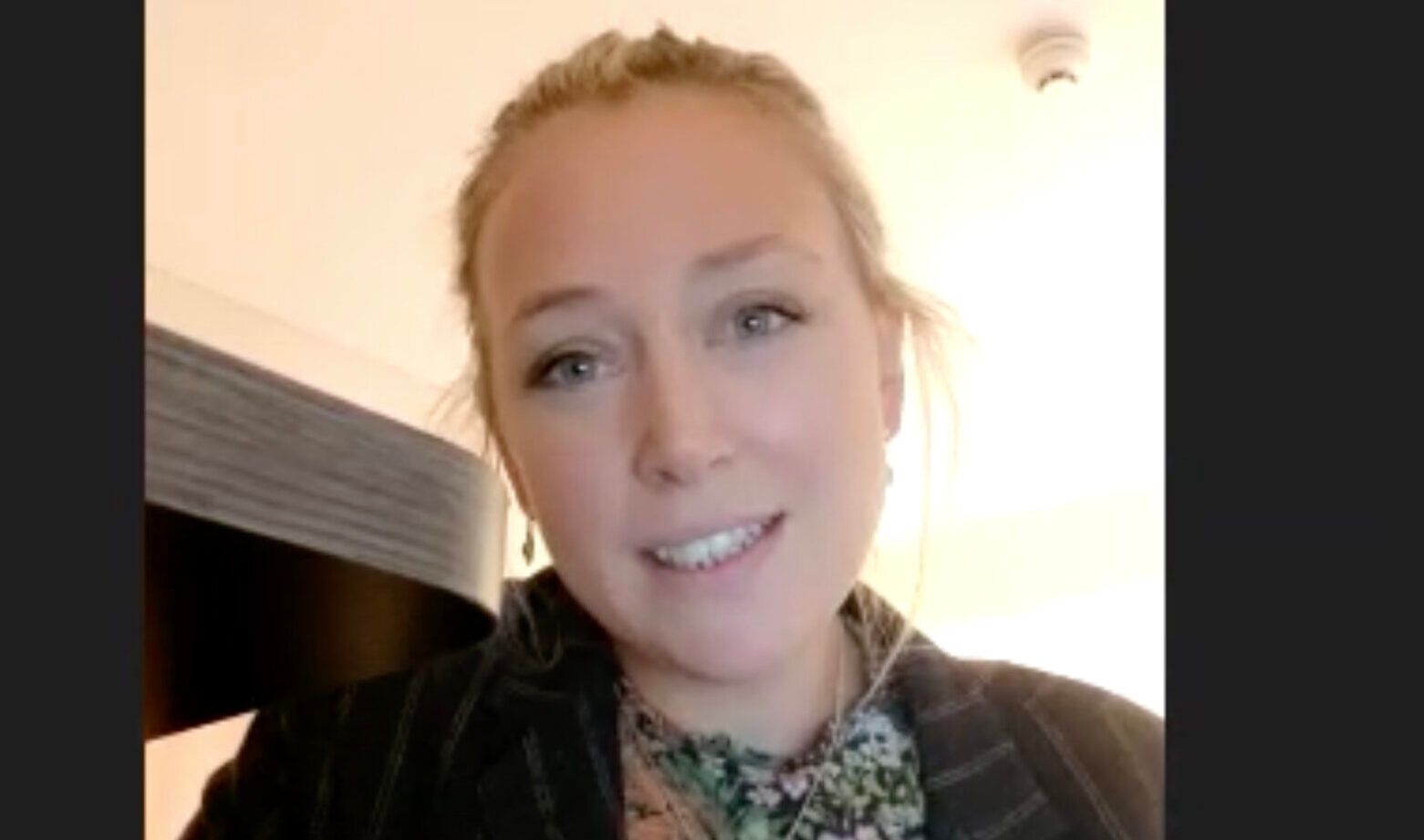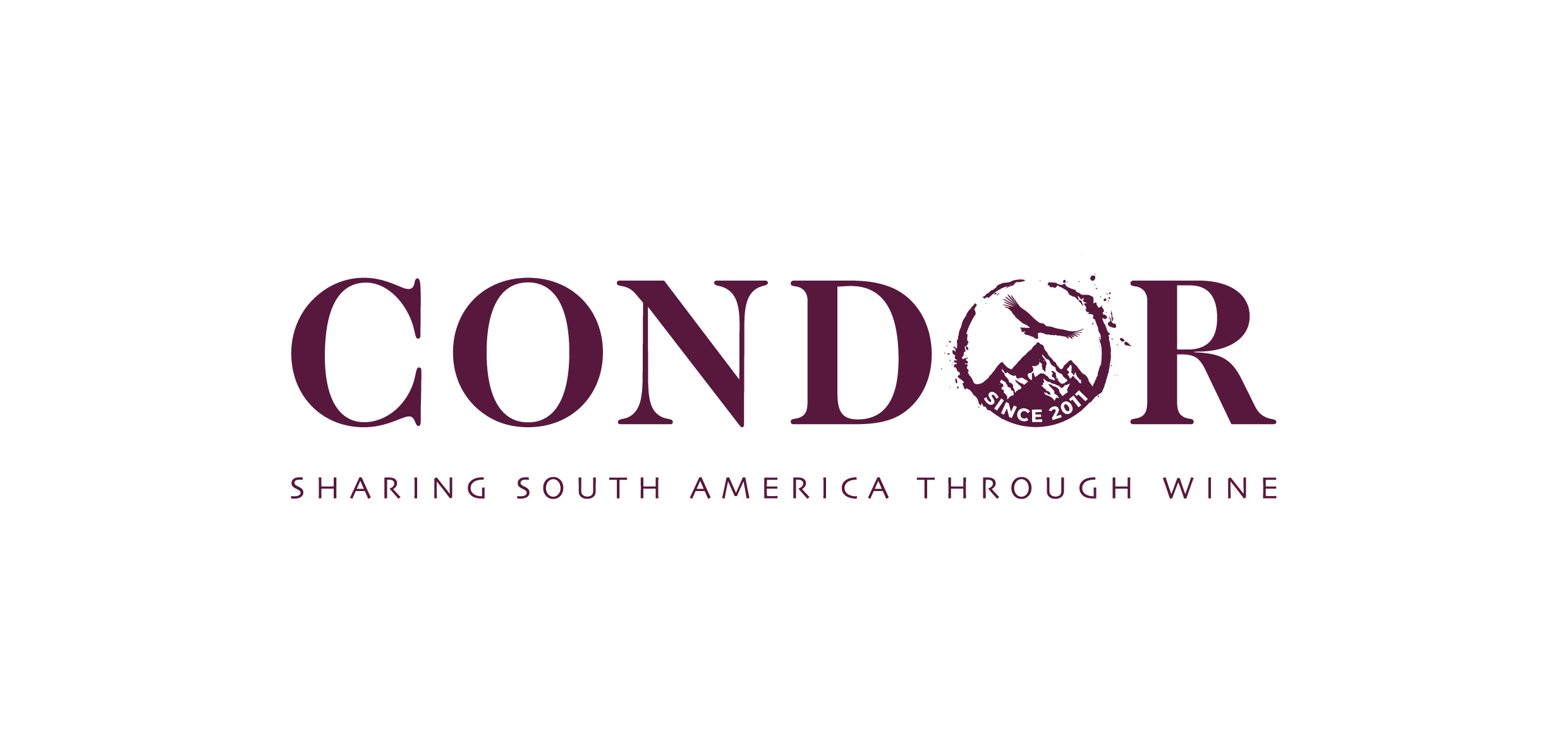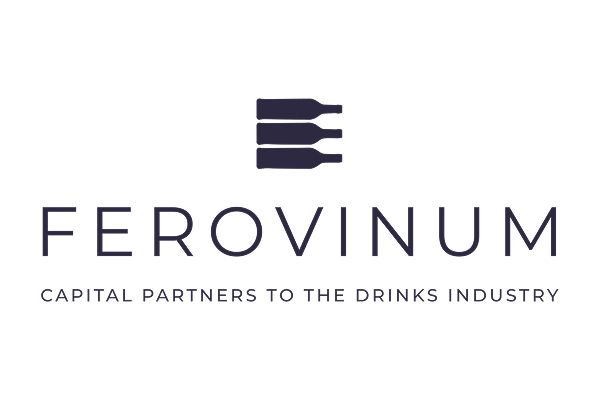Bibendum has had to face more than its fair share of challenges through the pandemic, but is already in 2022 gaining market share over its competitors and drying forward with a new premium wine strategy, explains Richard Siddle.
Harriet Kininmonth has only been with Bibendum for just over six months of its 40 years, but she joins it at a pivotal time in its history as it looks to cement its position with the C&C Group by being very much the premium wine arm of the business.
Kininmonth’s role, however, stretches across the group and as well as looking after the wine for Bibendum she is also in charge of group buying and centralised efficiencies across C&C, covering Matthew Clark, Bibendum Ireland in Ireland and Tennent’s Wholesale in Scotland in her official role as C&C’s new group wine trading director. But more, much more, of that later.
“I clearly knew Bibendum from afar, in my previous life, and I’m now delighted to be here and be part of its future as well. It’s a really exciting time to be here.”
She also brings very much an ‘outsider’s’ perspective on the company and can provide an objective view on what she sees as Bibendum’s core strengths, but also any potential weaknesses that its competitors look to exploit. Particularly as she has been working for one of its main competitors, Enotria&Coe, for the last 13 years.
(Click below for video extract of Michael Saunders on Bibendum’s core principles and reasons Harriet Kininmonth has joined the company)
One of its biggest assets, she says, is its “incredible portfolio” but the business has “always come across as having a really courageous and pioneering approach to the way that they work in market, and the way they work with producers” which has earned her “admiration” over the years.
“Being creative and brave is the reason why I got into wine. It’s exciting, it’s interesting, there are stories, there are people and Bibendum more than any other wine business has really brought that to life. So joining that and being part of that is really exciting for me and a real honour.”
Michael Saunders has been with the business from its very first day and whilst is clearly in reflective mood he’s not one for wallowing in nostalgia and is just as keen to talk about what it is going to do next, than pat itself on the back for any achievements it might have gained over the last four decades.
“It is, though, a significant milestone,” he says. It’s also a tribute to the building blocks on which the business was first based. Which was a company based on “quality of product and quality of people and determination to give our customers the very best service, the best information, the best knowledge that has stood the test of time”.
An offer that has evolved over the years to be far more than just a key supplier of wines and spirits. Now it is much more of a business partner, covering so many aspects of business, from the data and insights it can share, to the support with wine lists, training, recruitment and so much more.
Refreshed team
That’s why he is so keen to push forward and concentrate on the “refreshed” team that is now in place to both “charter Bibendum’s future” but also stick to the principles that has been at the core of the company for the last 40 years.
Kininmonth is clearly a key part of not only that new team, but in helping to shape, drive and lead the company’s strategy going forwards too.
Saunders says its recent 40th anniversary portfolio tasting was a “great launch pad to show the way forward and what is happening in the business today”.
Although he admits the last couple of years have “been pretty shitty frankly”. “That is just a fact,” he adds, pointing to its own logistics issues, the fallout from Brexit and the cyber incident that the company had to deal with and get on top of during the long lockdown months.
“We have had the support of our owners who have great financial strength and that’s made things more comfortable because we have been able to look after our staff really well financially during very difficult times. We have been able to look after our producers well financially during these difficult times and we are bursting out of the starting block. Since re-opening at the start of this year, it’s just incredible what’s going on and the speed of the recovery and the response of our team to that has been absolutely fantastic.”
Putting a new ‘refreshed’ team in place, though, has also seen some high profile departures too, and Saunders does not hide away from that it has “suffered” from what he calls the “great resignation” that has taken place across the sector. But he insists the “core spine of the business is really, really strong” and that all revolves around the quality of its people, reinforced by the fact that talents of the calibre of Harriet Kininmonth – amongst others – want to join the business.
“I love a bit of regeneration. It gets me motivated. We have been able to bring some quality people into the company who want to join our path forwards and are really excited.”
He’s also keen to make the point that as a business it does not “actually make anything” and relies on the people skills within the company to go out and “buy stuff from people we trust and then sell it to people that trust us to work with them to develop their service,” he says.
Central buying
(Click below for Harriet Kininmonth on C&C’s central buying plans and what it means for Bibendum and Matthew Clark)
A key part of Bibendum’s future is the new central buying function that now sits across all C&C’s core businesses covering Bibendum (on and off-trade), Matthew Clark, Tennents Wholesale that Kininmonth has been brought in to head up the wine side of the business.
Ultimately the new structure is about driving maximum efficiency through all of C&C’s moving parts and having a central management team in charge of making it happen. Which is now in place under the leadership of Andrea Pozzi.
A way of working that makes it potentially relevant to any customer in all channels of the market with a different business “asset” capable of serving them.
Making such major internal changes can take some time to implement, understand and communicate and Saunders says he is very aware of the “terrible disinformation” that is “being put out there by some of our competitors” that somehow C&C is going to “fold Bibendum into Matthew Clark”. He dismisses such rumours out of hand: “Who in the right mind would do that?”
Instead he believes C&C could not be “more clear about how we are going to market and how the individual businesses operate going forward and it’s a pretty compelling argument actually”.
Being in charge of wine buying across the C&C Group is clearly a major responsibility, but it also gives Kininmouth a unique picture of the wines being bought and the overall strategy behind them.
The new centralised structure is the key reason why she wanted to join C&C. “I think I have got one of the best wine roles in the UK. The direction and clarity of what C&C is doing, with Bibendum, with Matthew Clark, with Walker & Wodehouse and Tennent’s means there is a really clear definition about what we want to achieve and there is are all the efficiencies behind it that are second to none”.
A business structure, she says, that now gives Bibendum the green light to manage, and really drive the “premium wine specialist” category even more so than before and allows Matthew Clark to be the “great drinks solution for all” that can act as a “composite distributor with a fantastic wine range”.
When you put all that together with the opportunity to source wines at all price points, including entry level, it gives C&C “enormous buying power which I don’t think anyone else is able to do”.
It’s a position she believes will then allow each of the separate business to really work, in their own individual teams, to maximise the opportunities they have.
That means the challenge for Bibendum is to “not just follow trends, but make trends and continue to seek out the best iconic blue chip agencies across the globe”. “People,” she adds, “come to Bibendum for our portfolio and our people” and her objective is to make sure that Bibendum is seen as having the “number one portfolio” in the market.
How it works for customers
A customer can now work with the most appropriate and relevant part of the C&C group for their needs, be it Bibendum for premium wine, Walker & Wodehouse for independents, Bibendum’s major multiple off-trade team for multiple retailers, Matthew Clark for mainstream beers, wines and spirits and then specialist drinks support in Scotland through Tennent’s and in Ireland with Bibendum Ireland. It means a hotel group, for example, might work with Matthew Clark for its main wines, beers and spirits range, but will then be able to cherry pick and design its premium wine list with the Bibendum team. But crucially the two sets of wine would all come on the same delivery.
“Where the world is going right now people are gone to have think really hard about their supply chain,” says Saunders both from a “security” point of view and being assured it is going to work and from the “environmental impact” of taking deliveries.
“We can help you make this more efficient,” he explains. “That is resonating with people. All the product you want, all the service you want and you get efficiency in terms of logistics and environmental impact. That’s smart. We have got a lot of respected competitors and we don’t see anybody who has got a similar play to us.”
(Click below to hear Michael Saunders sets out new C&C’s new central buying and management team)
How it works for producers
From a producers point of view they now have the opportunity to not just work with Bibendum, or Matthew Clark, or which ever business they have been aligned to, but open up their entire range to potentially work across the C&C Group and have wines going into different channels of the market.
So rather than have to work with different distributors and partners for their various brands, ranges and sub-brands, they can potentially manage them all through the new centralised structure of C&C.
“We have a home for their entire range across all channels. That’s really powerful,” says Kininmonth. |
Equally it needs to be working with the right producers that can really see the benefits of what C&C and its various parts can offer, says Saunders. Whether that is major players or the large number of smaller, more artisanal producers that are still very much part of the Bibendum family, its DNA and future plans.
“It is an evolution not a revolution,” he adds, who admits C&C and the new business model might not be the right solution for all drinks producers out there, but it’s a game changer for those that it is right for. “We are only at the startling line for this. We are looking to align with people who want to win.”
How it works internally
Essentially the new structure will see all buying and trade marketing positions work across the group to ensure they all have a common goal.
So if you are the French buyer or French trade marketing manager you are now responsible for buying wine and looking after French producers across all aspects of the group, with the ability to work with your separate teams to make sure work in those channels.
Kininmonth has the wine buying and technical teams reporting into her along with the wine trade marketing and training divisions so that all wine departments are under “one umbrella”.
There is a more individual approach when it comes to customer and digital marketing as that relies on a particular tone of voice appropriate for that channel.
The sales side of the business will be run by having a director in each region who will sit across Bibendum and Matthew Clark and then underneath them there will be separate Bibendum and Matthew Clark account managers. That way the team can identity those customers that might want to work with both businesses and cherry pick the right wines from both ranges.
Saunders, though, is quick to stress that “those people who work in Bibendum are there to sell the Bibendum range”. It simply means that there will be “times when we jointly work with our colleagues at Matthew Clark to make sure that we can give our customers as much of what we have got as we possibly can”. But there is a real “brand identity and understanding” for both Bibendum and Matthew Clark that sits within C&C.
He adds: “We now have the right skills in all areas of the business.”
(Click below for Harriet Kininmonth on why she thinks she has one of the best wine roles in the UK at C&C)
Strategy in action
It is not an over-night process and Bibendum is taking its time to talk to each of its producers and plot the right route to make for their various brands, line and sub-brands. Which might mean their wines operating through different channels of the business.
Saunders says the biggest testimony to how well the new strategy is going down with major producers, in particular, is Gerard Bertrand’s decision to move to C&C. “He really understands the power of the distribution network that C&C can offer him. He has so many different properties and so many different wines and we can answer all his requirements through C&C. He won’t be the last and we are very ambitious to work with global leading players and with people with real ambitions.”
It has also recently been announced that Moet Hennessy is to work with C&C as its exclusive partner for all its products in Scotland through its various routes to market. Another major coup for the business, says Saunders. “For them that’s a great statement of intent… and it’s a huge testament to what C&C can do across categorise from wines, to Champagne to spirits.”
It must certainly give Kininmonth and her team a boost when going out explaining the new strategy to both existing players and potential new producers for the group.
The changes also put Bibendum into a different position in the market than it has had in any of its previous 40 years, says Saunders.
“Customers are premiumising and that plays into us incredibly well,” adds Saunders.
Digital solutions

Bibendum’s new e-commerce platform for customers is now live
Bibendum has also this year set up its own e-commerce platform for its customers to place orders, but to also act as a new platform for producers to promote and explain their wines.
Saunders admits it is probably the last of the major players to offer an online ordering service, but believes it will be one of the best as a result.
It is, though, deliberately placing an onus on its producer partners to manage their content on the site, so that they take an active role in how it works and how effective it can be for customers to use.
The big switch to online during lockdown also saw Bibendum dramatically upscale its own digital team and skills within the business to really grasp the digital opportunity – like the creation of its Local platform that still allows bars, restaurants and pubs promote their offer via smartphones.
Its digital reach also includes the direct communications to customers and the trade through its various social media platforms and all the work that goes on through its marketing teams to engage with, create and share targeted relevant content.
Sustainable future
It stands to reason that a business of the scale of C&C also has to be taking much more of a lead on driving a sustainable agenda. Which is partly where this new centralised, efficiency-based strategy comes from.
Saunders says its sustainability strategy is an on-going one and it has already signed up to “significant charters” and will continue to do so in the months and years ahead as it learns far more about what are the right steps to take to be truly sustainable for the company, its people and the planet.
Kininmonth says the business as a whole has the clear ambition of being the “UK’s leading
ethical drinks wholesaler and brand partner”. Its challenge is to make sure it “carves out its portfolio” so that it is aligned to those sustainability principles and it is “integral” to everything it does from ethical sourcing, to packaging, innovation, working with emerging regions, right through to diversity in its people.
Again she sees a “huge opportunity for Bibendum as innovators and pioneers to really make some noise in the market” around the sustainability agenda.
But to live up to that claim will mean looking at its own sourcing, and how its own partners and producers operate, as well as looking at its packaging, bottling, through to the diversity of its workforce. There is an opportunity, she adds, to be seen as “innovators” in this whole area.
“There are things we can do immediately and things that will take time. But it is a huge undertaking,” she adds.
Different times
(Click below to hear Bibendum’s Michael Saunders explain the biggest changes for wine importers over the last 40 years)
All of which is a far cry to what Saunders admits was “the wild west of the early days” when wine distribution really took off in the 1980s on the back of the huge rise in the on-trade with restaurants and bars opening all over the country.
“That’s when the on-trade started to take wine seriously and they needed to have agencies and exclusive wines for their list,” says Saunders. “Then out of that came the off-trade and the need to supply the number of off-licenses and retail chains that were opening up. That was the start of the new beginning.”
He adds: “It was all a bit of a land grab and we, and others, tried to get the right agencies as quickly as we could and then, and only then, did we then try and figure out what we were going to to do with them. I look at the trade now and see a lot more sophistication. A lot more smarter people in the business. A lot more data. It’s not good enough any more just to be the sole importer and get people to list the wine. You have to back it up with a much smarter argument.” The core of the business, however, has not changed. “We feel a responsibility to our suppliers, our agencies, that we are smart as well as good and that is going to accelerate.”
It’s where those producers now come from that has also seen a “gradual evolution” over the last 40 years, with more New World producers appearing and then dominating wine lists.
“Simon Farr was one of the first to bring Malbec to the UK through Bibendum,” he adds.
Then there has been the boom in the fine wine sector and the insatiable demand for certain wines and producers.
“It’s hard to get your head round just how in demand these wines have become. In the early 1980’s we would have pallets of these wines just sitting here in the office. Now you can’t get them at all. We used to have a wall of fine wine. Now they would need to be under lock and key.”
It’s why he has personally been so excited to help drive Bibendum’s new Bordeaux initiative to try and get more reasonably priced wines into the UK market from a wider range of chateaux and producers.
He does, though, fear there “is going to be a consolidation of some type” in the coming months and years.
“Importing product into this country is insanely difficult now and insanely expensive and the complications I don’t think are going to change. There is a hell of a lot for an agent or distributor to consider that was never part of the early days. In the early days it was pretty simple frankly.”
- Bibendum is a supplier partner to The Buyer.
































